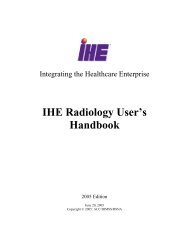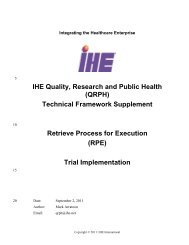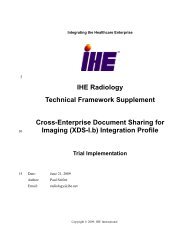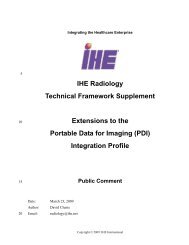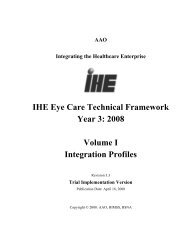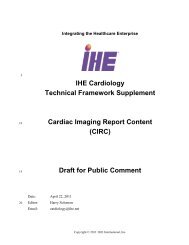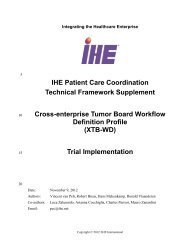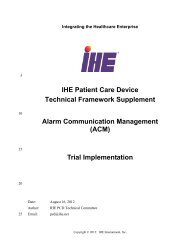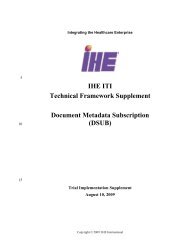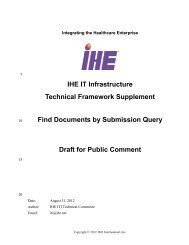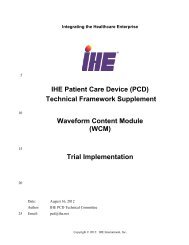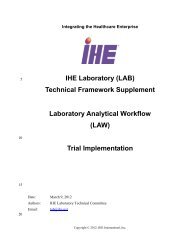IHE Patient Care Device Technical Framework
IHE Patient Care Device Technical Framework
IHE Patient Care Device Technical Framework
- No tags were found...
You also want an ePaper? Increase the reach of your titles
YUMPU automatically turns print PDFs into web optimized ePapers that Google loves.
<strong>IHE</strong> <strong>Patient</strong> <strong>Care</strong> <strong>Device</strong> <strong>Technical</strong> <strong>Framework</strong>, Vol. 2: Transactions________________________________________________________________________Actor Actor ActorMSG1MSG2MSG310The interaction diagrams used in the <strong>IHE</strong>-PCD <strong>Technical</strong> <strong>Framework</strong> are modeledafter those described in Grady Booch, James Rumbaugh, and Ivar Jacobson, TheUnified Modeling Language User Guide, ISBN 0-201-57168-4. Simpleacknowledgment messages are often omitted from the diagrams for brevity. Oneor more messages may be required to satisfy a transaction. Each message isrepresented as an arrow starting from the Actor initiating the message.• Message definitions: descriptions of each message involved in the transaction, theevents that trigger the message, its semantics, and the actions that the messagetriggers in the receiver.2.2 HL7 Profiling Conventions20HL7 messages are described in this document using message level and segment leveltables according to static definitions of “HL7 constrainable message profiles” (see HL7v2.5 section 2.12.6). For details of the HL7 message profiling conventions, the reader isreferred to Appendix F.A message level table represents one <strong>IHE</strong>-constrained message structure with its list ofusable segments. A segment level table represents the <strong>IHE</strong>-constrained content of onesegment with its usable fields:• Message level tables are included in message subsections within each transactionsection, and represent the static definition of the specified messages. A messagetable is followed by comments highlighting the segment usage. The subsectiondescribing a message also provides the descriptions of any segments that arespecific to this message.• Only the segments that have a usage code R, RE, C or CE in at least one messageare described. In other words, segments, which are always optional (O) or notsupported (X), are not described in the <strong>IHE</strong> PCD TF.Rev. 1.1 TI: 2006-08-1511Copyright © 2005-2006: ACC, ACCE, HIMSS, and RSNA



